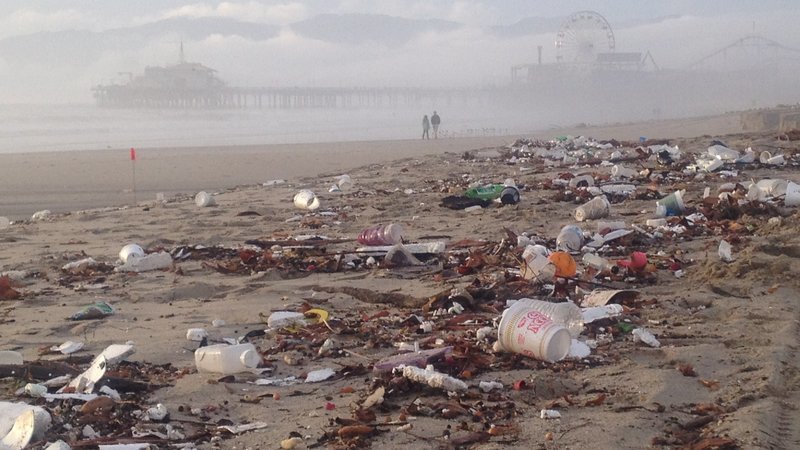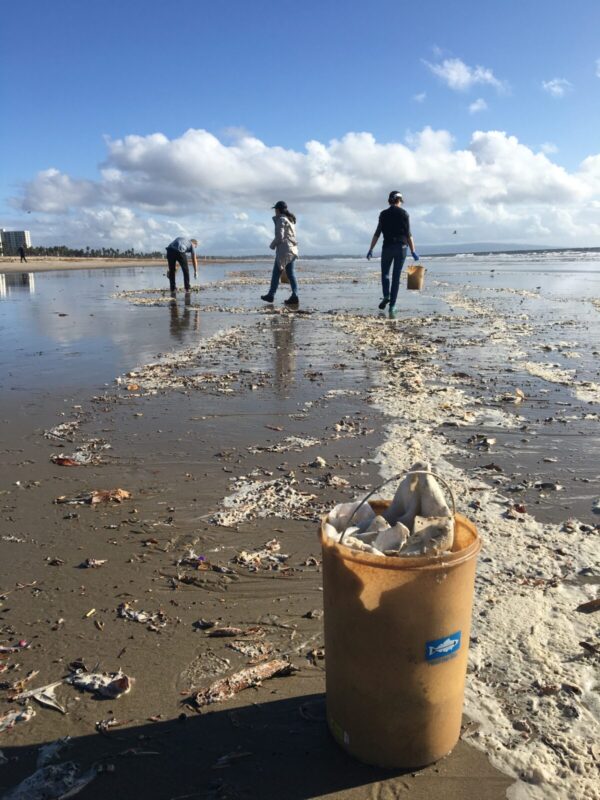Storm Response Team… Unite!

Ready to take the next step? Complete the virtual training to be added to
Heal the Bay’s Storm Response Team.
Stay safe and follow our extended self-guided cleanup safety tips for post-storm and atmospheric river conditions.
DOWNLOAD Our Self-Guided Cleanup Tips
Fall in Los Angeles means earlier evenings, vibrant sunsets, thicker wetsuits for surfers, autumn colors taking over the San Gabriel Mountains, and the first rainfall of the season is inevitably approaching with winter rains following. We welcome the much-needed showers to quench our environment and combat wildfires. However, the first rainfall (aka the first flush) also impacts the health of our local watersheds and beaches.
The Risk
Stormwater is a major source of pollution for the rivers, lakes, and ocean in Los Angeles County. The first flush brings a flood of water, toxins, and trash from our streets straight onto our beaches through the storm drain system. The runoff eventually dumps a mountain of trash onto shorelines, from Malibu to Redondo Beach, without any treatment or screening. This poses a significant risk, not only for wildlife and marine life who can ingest trash or get entangled, but also to the health of our communities. This is why we have suggested safety precautions after a rainstorm, like waiting 72 hours to go swimming and staying at least 100 yards away from any flowing outfall that looks like a stream meeting the ocean.
The Data
During Coastal Cleanup Month in September 2020, Heal the Bay volunteers removed more than 40,000 pieces of trash, including food wrappers, straws, takeout containers, and plastic grocery bags from our neighborhoods, parks, trails, and beaches. Personal Protective Equipment (PPE) even made the list of top items found for the first year ever. The 4,320 pounds of trash would have been swept through the storm drain system and out on the beach after the first flush if our amazing volunteers didn’t take action.
Coastal Cleanup Month ended weeks ago, but the trash in our environment continues to pile up. The first flush will happen soon, and it will take all of the accumulated pollution in our communities and storm drains and dump it straight onto our beaches. We have a finite amount of time to remove this trash before it reaches the ocean and becomes marine debris.
How Can You Help?

For several years now, Heal the Bay deploys a team of first responders known as the Storm Response Team in an effort to remove trash and debris around low tide before it heads out to sea. This dedicated team braves the elements and heads to designated areas immediately following a rain event.
We need more volunteers to join our Storm Response Team for the rainy season to help remove trash, track data, and/or document photos. If you’re interested in being the ocean’s first responder after a storm and protecting our environment and community, sign up to receive alerts about volunteer opportunities!
Heal the Bay will host a virtual training for our Storm Response Team to brief volunteers on what to expect and ensure the team is prepared to conduct individual cleanups after the first rainfall. When a storm hits, volunteers will receive an email a day (or sometimes just hours) in advance of low tide with relevant details and location recommendations. At that point, our Storm Response Team can spring into action, spreading out along the coast and collecting as much trash as possible before it is swept out to sea.


